368 Clothes Rack Dogs
THE CLOTHES RACK DOGS
by David Hancock
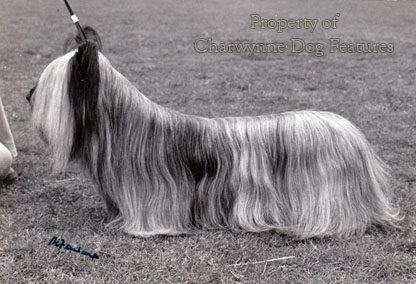 The exhibition of livestock should always mean knowledgeable judges going over well-presented animals, with the exhibits conforming most closely to the design of that breed being rewarded. Livestock shows precede dog shows, as do houndshows. Dog shows however now contain an element which both livestock and houndshows lack: in some classes the exhibits can win on the splendour of their coat, rather than on their overall conformation. Breeds like the Old English Sheepdog, The Afghan Hound, the Rough and Bearded Collies and the Skye and Yorkshire Terriers can now be judged mainly on their coats. This can only mean that the rest of the dog is being downgraded.
The exhibition of livestock should always mean knowledgeable judges going over well-presented animals, with the exhibits conforming most closely to the design of that breed being rewarded. Livestock shows precede dog shows, as do houndshows. Dog shows however now contain an element which both livestock and houndshows lack: in some classes the exhibits can win on the splendour of their coat, rather than on their overall conformation. Breeds like the Old English Sheepdog, The Afghan Hound, the Rough and Bearded Collies and the Skye and Yorkshire Terriers can now be judged mainly on their coats. This can only mean that the rest of the dog is being downgraded.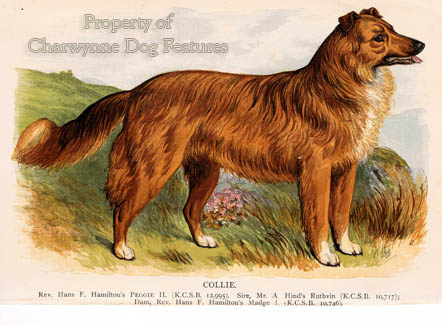
In his 'Dogs of Scotland', published in 1891, Thomson Gray wrote: "The perfection to which the coat of the Skye Terrier has been brought is something wonderful. We have measured hair on the body of a Skye Terrier 12 inches long, and 8 to 10 inches is not uncommon. Only by careful selection, and constant attention to coat, can such length be obtained." I wonder if this 'attention to coat' has always been to the advantage of the Skye Terrier as a dog. Certainly their popularity is not increasing with the years: 110 registered in 1986, 100 in 1990 and 65 in 2000 does not augur well for the breed. As recently as the 1970s, these figures were so much higher: 198 in 1970, 240 in 1973 and 237 in 1974. If 'attention to coat' translates as a great need for attention to coat-care, then this could put off a potential owner with a busy life and higher priorities than prolonged grooming of a dog.
The extant British breed standard does not limit the Skye Terrier's length of coat but demands an overcoat that is long, hard and straight. The American standard specifies an outer coat that is 5 and a half inches long without extra credit granted for greater length'. The latter phrase is a very clear instruction to a judge and can prevent such a breed becoming one of the 'coat-breeds', whereby every other part of the anatomy gets neglected but the part you can groom. It is interesting that the Bearded Collie's standard only uses the word long, in the section on coat, in connection with the dog's beard. The Briard's coat has to be at least 3" long. Surprisingly, the Old English Sheepdog's coat is not expected to be long in its standard. 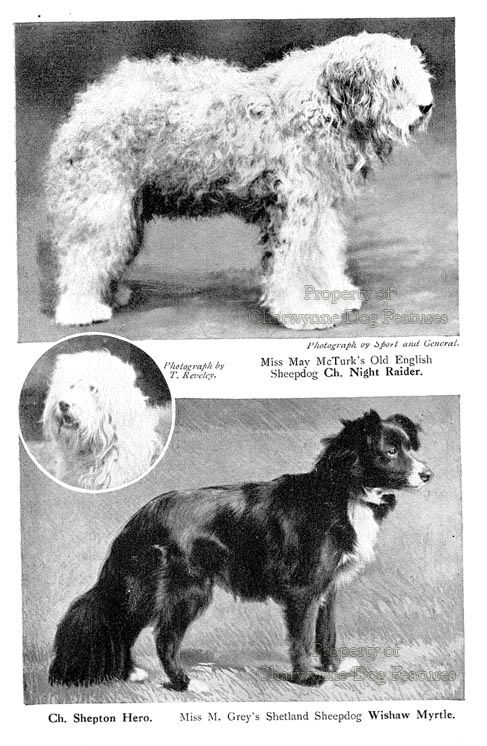
Long coats in breeds of dog have created a mini-industry in two senses; firstly there is the provision of special tables, combs, brushes, shampoos, hair dryers, protective clothing and even top-knot ribbons, and, secondly there is the work undertaken by fanciers at home and at shows, whose industriousness never ceases to amaze me. I am all in favour of dogs being well groomed for the show ring, a dirty unkempt dog should never win. But are we getting to the stage where it's all getting out of hand? I don't mean the cost of it all, the time it all takes and the space it demands at crowded show venues, I mean the imposition on the dog both by way of the length and weight of coat and by making the dog stand for long periods being preened.
When dogs were valued for what they could do rather than what they looked like, excessively long coats did not feature to the degree they do now. If you look at the early show specimens of Bearded and Rough Collies and Shetland Sheepdogs, you will see jackets far shorter and less heavy than those on their counterparts today. It is the same with many of the Terrier breeds: Yorkshire, Skye, Scottish, Sealyham, Wheaten and Kerry Blue especially. Yet time and time again the pioneer breeders warned against this tendency. Mrs Willison, who launched the show career of the Beardie, was written to by James Garrow, the renowned sheepdog judge, and advised: "The coat should not be overlong and of a raw harsh texture. They should not require daily grooming...Have you drawn up the standard for the KC yet? You want to emphasise the rule on coat."
Early in the last century, H.A.Titley, who contributed so much to the development of the Old English Sheepdog, wrote: "During recent years there has been an increasing tendency to overdevelopment of the coat and especially for show purposes, but it is an adverse handicap for 'working' dogs which are exposed to all weathers, mud, and dusty roads." Is anyone out there listening to these wise old men? Once this strange obsessive lust for grooming rears its unwanted head, true type is soon replaced and then forgotten. The ultra-hirsute become the standard. The grooming addicts can then get to work but over the succeeding years so does public disinterest, unless a paint manufacturer needs a victim, sorry, emblem.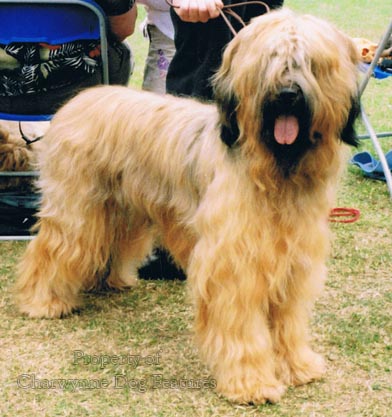
Length and texture in a purebred dog's coat are part and parcel of the essential type of that breed. A recent critique by the judge in the Dandie Dinmont Terrier ring at a major 1996 Championship show made this point: "In my view there is no place for exaggerated top-knots, for long beards or for skirts and fringes under the body. While these things may all look flashy and may well make Dandies be noticed by those outside the breed, they do nothing to improve or even preserve true Dandie type." In far too many breeds the sheer length and mass of a dog's coat seem to mesmerise the judges. The Bedlington Terrier, a unique combination of lurcher and terrier, has a fluffy coat in today's rings because the word 'linty' is interpreted as profusely fluffy instead of its real meaning, a weather-resistant 'mattress filler' of a coat. I can remember Poodle fanciers claiming that they could balance a cup and saucer on the back of one without spilling a drop because the coat was so springy - not any more.
The 1995 Crufts judge in Briards wrote this in the critique: "While I am very aware of the school of thought that the Briard is a working animal and as such should not be overgroomed for the show ring, I have to admit that the spectacle of a full ring of well-groomed Briards, on the green carpet, was an impressive sight." If that kind of thinking prevails in this distinguished breed then within ten years the Briard will win the Afghan Hound classes. The above quoted Dandie judge makes my point for me at the end of that critique: "Overbarbering will undoubtedly lead to a lack of ability on the part of judges to assess coats. This in its turn, will lead to poorer coats and untypical wooliness. PLease don't turn Dandie Dinmonts into poodles. Moderation is what is required, otherwise the breed will turn into a different breed."
Pioneers in many breeds anticipated the likelihood of problems ahead in coats. The early standard of the Scottish Terrier specified a coat that "should be rather short (about 2 inches)"; today's standard omits that stipulation. The early standard of the Skye Terrier asked for an over coat averaging 5-7 inches; today's just specifies an outercoat that is long, with no limit mentioned. The Yorkshire Terrier was once expected to have a coat that was as long as possible. The absurdity of this was realised and it must now be (but isn't!) moderately long. The Shetland Sheepdog should have an outer coat of long hair (but how long?). The Rough Collie is expected to have a coat that fits the outline of the dog's body (but doesn't!).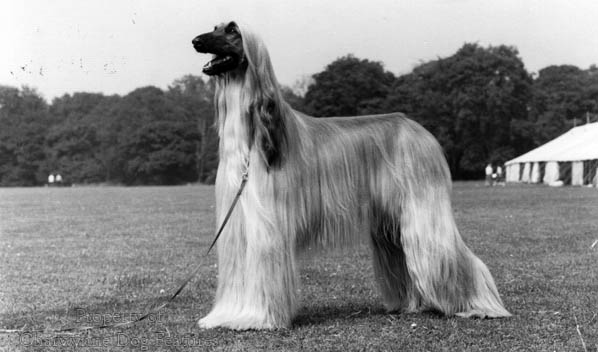
When the Rough Collie was judged to a scale of points, easily the highest number (20 out of 100) was awarded for the coat. This appals me; how can the coat, especially in a working breed, possibly be the dog's most important feature? But it shows how the early exhibitors rated coat above all else. Is it at all surprising therefore that the Collie is susceptible to all the dermatoses which affect the modern dog? The excessively heavy coats of the Rough Collie and the Shetland Sheepdog were not there when these breeds first emerged and cannot be good for either breed.
Where will the passion for possessing dogs as grooming objects end? Are we really happy about producing breeds of dog whose coats are a physical handicap, almost a disablement? What is the point of valuing the origin of your breed and then breeding specimens of that breed with twice the coat of their ancestors? The key questions are surely these: What length of coat does a dog need to retain the type of that breed? and, what length of coat allows the dog to lead a healthy life? Seeing a working or sporting breed in bootees to keep its coat clean saddens me. It is important for us to show respect for our dogs, not just regard them as an accoutrement for a human hobby. 
Take a close look at an Afghan Hound in a shell suit. This is a proud breed with a proud heritage; it knows when it is being humiliated. When are we going to stop taking advantage of dog's desire to please man and start treating dog as man's respected and valued companion, with needs of their own - and their pride. Subjecting a dog to hours and hours of washing, drying, combing and brushing is a self-centred human indulgence, never a canine choice. Whenever we indulge ourselves, we need to appreciate that it is a facet of supreme selfishness which calls for honest analysis. Cruelty to animals can be casual, thoughtless and wholly spiritual, as well as violent, nasty and physical.
Indirect cruelty to animals can be quite gentle in application - by inflicting, for example, such an excessively heavy or long coat on a dog that it is doomed to spending long periods of its life being preened or suffers skin complaints. The owners of long-coated breeds need to pose themselves this question: Is the long coat on my dog a benefit to my dog - or to me? The once-imposed length limit on a Skye Terrier's coat should be re-imposed and fanciers of other long-coated breeds should think hard about a similar review. Perhaps Lewis Carroll had a message for us in relation to our attitudes to our dogs' coats, when he wrote:
"Their coats were brushed, their faces washed,
Their shoes were clean and neat -
And this was odd, because you know,
They hadn't any feet."